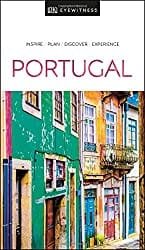Portugal, the perfect European getaway
Portugal is a country that Gary and I have really only discovered in recent years. To be perfectly honest, I’m kicking myself that we hadn’t visited sooner.
Perhaps it’s because it gets slightly overshadowed by its delightful and charming neighbour, Spain. I’m not too sure; however, I think the Portuguese probably prefer it that way.
Many of Portugal’s smaller towns and rural villages truly feel like the locals still have a firm grasp on their rich culture and close family values.
It is a beautiful country and one that we fell in love with as soon as we arrived.
Over the past few months, we’ve been reminiscing over our previous trips near and far, and Portugal is unquestionably a country that we dearly want to return to.
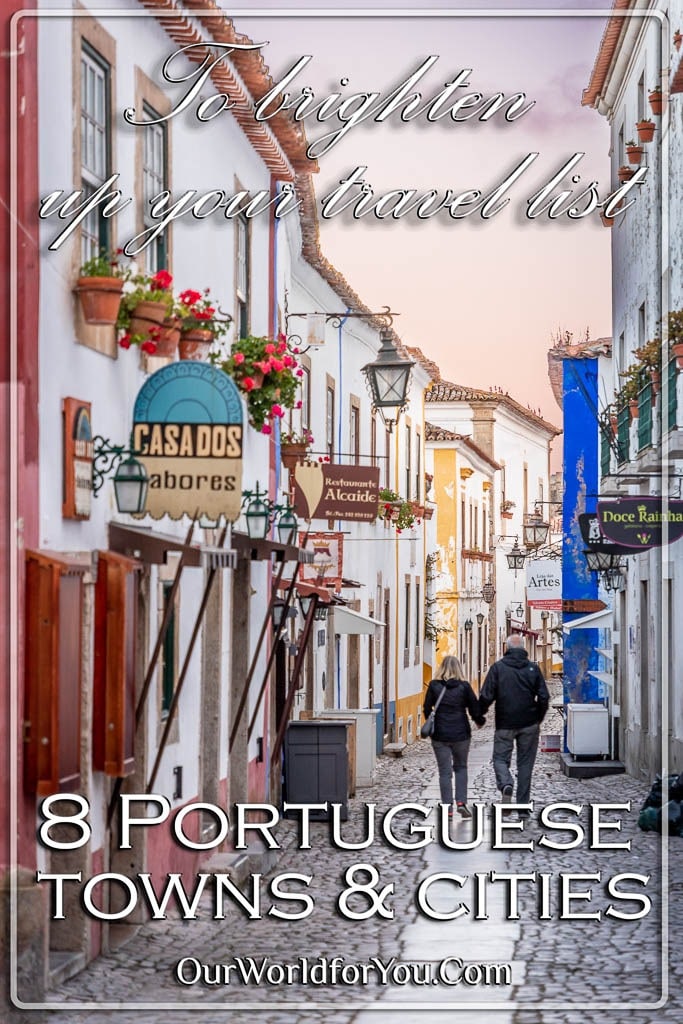
Portugal has so much to offer, from its ancient cities and its spectacular architecture to the rugged, craggy cliff faces and romantic hidden coves.
So, I thought I’d share 8 of our favourite locations with you, which I’m sure will enrich your travel list. Hopefully, even tempt you into a road trip around Portugal as we did.
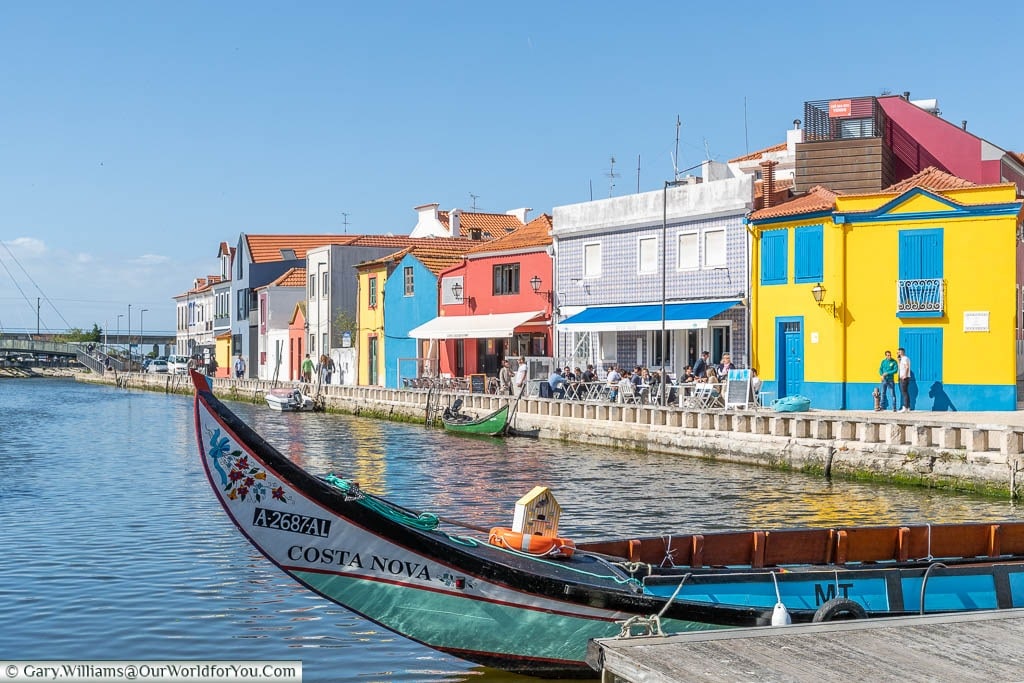
Our 8 Portuguese locations
Aveiro is a city nestled within a lagoon along the east coast of Portugal. I loved many charming aspects about Aveiro, and one, in particular, was that it didn’t quite feel like a city to me. It was a pleasurable size, easily manageable and relaxing.
One of my favourite elements from any location are waterways weaving through streets and snaking past squares. And, yes, Aveiro has canals, a big tick, that’s me happy.
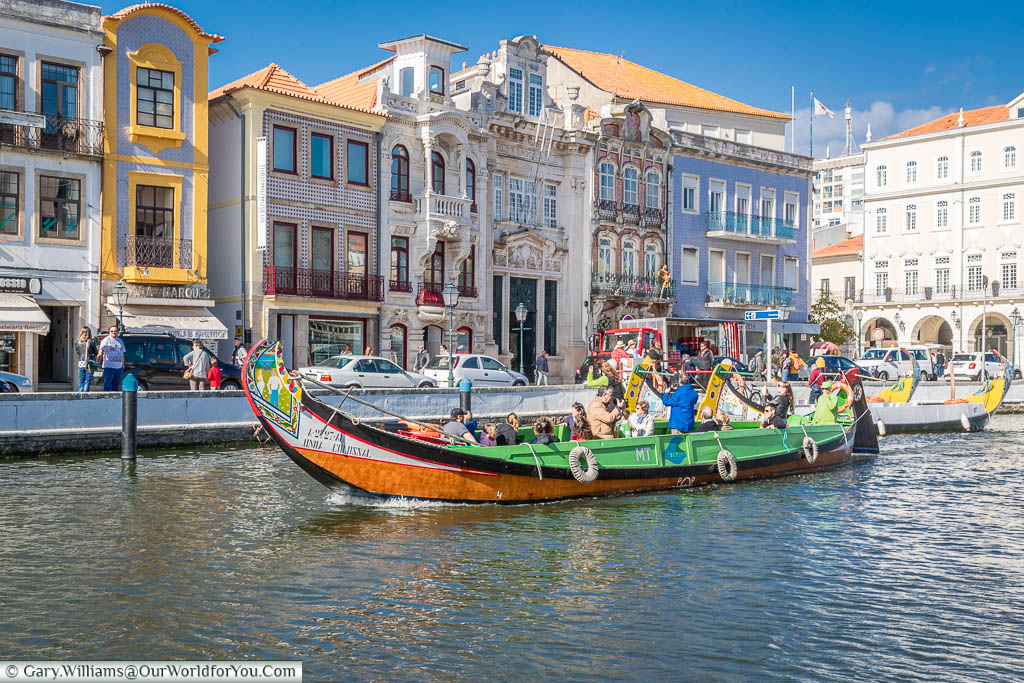
If you’ve completed a little research on Aveiro, then you’ll know the waterways are going to be bustling with flamboyant and charismatic barcos moliceiros. If you haven’t, then you are in for a delightful surprise; the vibrant boats once used to harvest seaweed.
Today the majority of these hand-painted boats will take you off on a leisurely trip to experience Aveiro at a slower pace and a little different perspective on life.
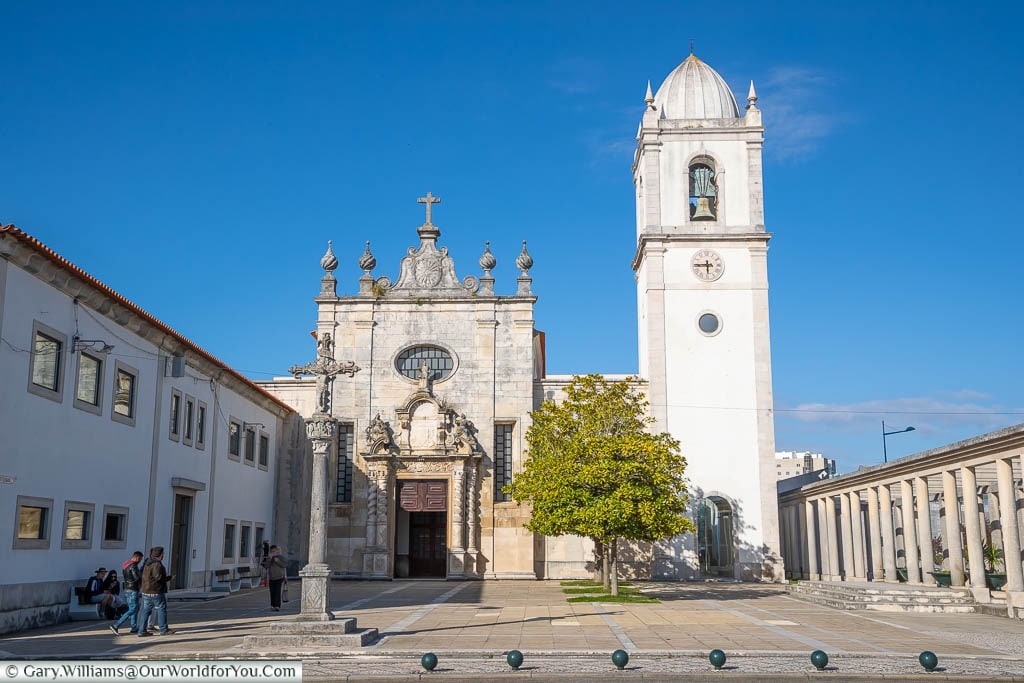
The main canal through Aveiro is the Ria de Aveiro and sometimes referred to as “The Venice of Portugal”. You will see beautiful Art Nouveau architecture with the blue and white ceramic tiles so synonymous with Portugal.
Keep a lookout for the little cabin selling Ovos Moles. These small local delicacies are bite-size sweets wrapped in rice paper, with a rich egg yolk and sugar filling mmmm delicious.
Book a boat tour
Where to stay in Aveiro
Local information
Nearby, Aveiro along the Atlantic Coast is the colourful town of Costa Nova and a location with an instantaneous vibrant hit.
The candy-striped palheiros stretch out along the promenade and just make you smile; they are so charming.
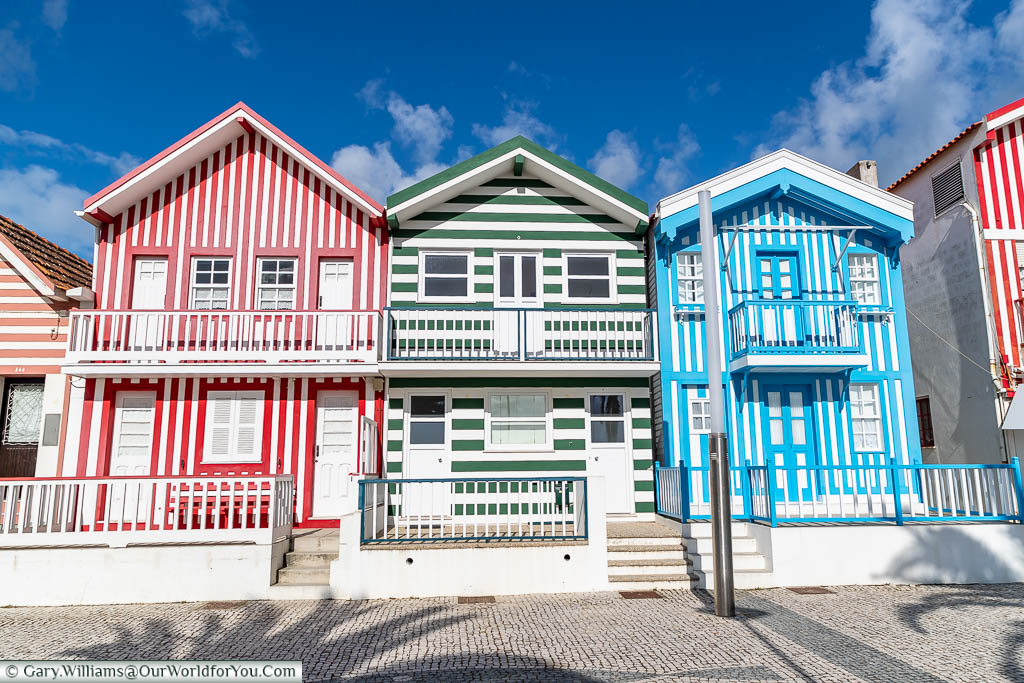
Traditionally the palheiros cabins would have been used by the local fisherman for storing their nets and fishing equipment. However, nowadays, they have become popular with tourists and have been converted into charismatic chalets and holiday homes. They do look rather cute.
Another reason to head to Costa Nova is for its glorious golden sandy beach of Praia da Costa Nova. As the little town of Costa Nova hugs the Atlantic shoreline, the sea may often become rough. Therefore, if you love surfing, then this is the place to head to.
Where to stay in Costa Nova
Local information
Start planning
Where do I begin? Porto is full of character, vibe, history, and an infectious laid-back charm; we loved it.
Let’s start at the Douro River, the pulsating heart of this northern Portuguese city. Both of the Douro banks are bursting with life; the Ribeira on the north are alive with cafés, bars and restaurants. It also has stunning examples of Porto’s colourful townhouses and ornate wrought-iron balconies.
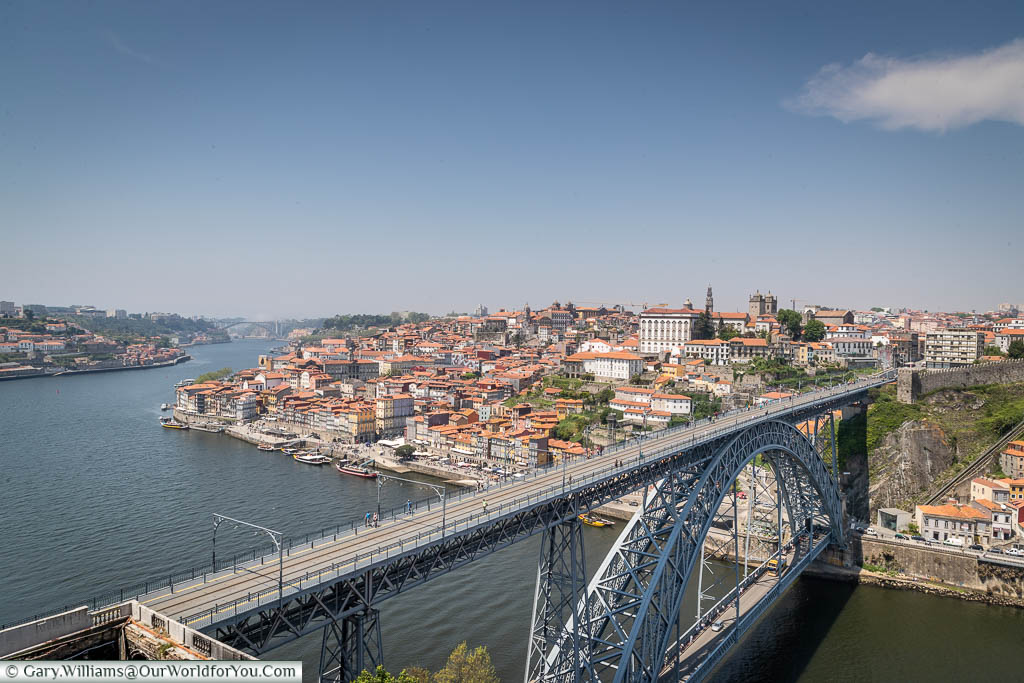
Then head across the magnificent Dom Luís I Bridge for that iconic view back across Porto’s UNESCO Old Town, to the lower banks of the Gaia. In this vibrant region of Porto, not only will you find fascinating examples of street art, but it’s also where you’ll discover the Port wine cellars. That can only mean one thing a cellar tour and Port wine tasting.
It’s lovely strolling along both banks of the Douro; the atmosphere is so relaxing. You’ll spot the flat-bottomed Douro Rabello boats, which were historically used to transport the Port wine from the UNESCO Alto Douro Valley vineyards to the cellars in the city.
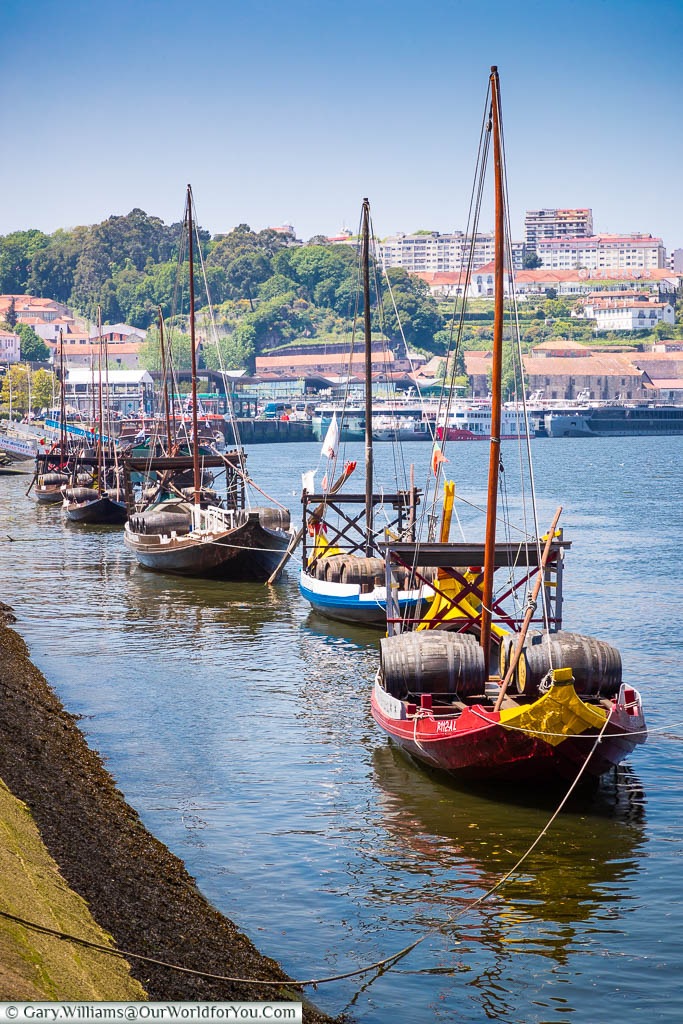
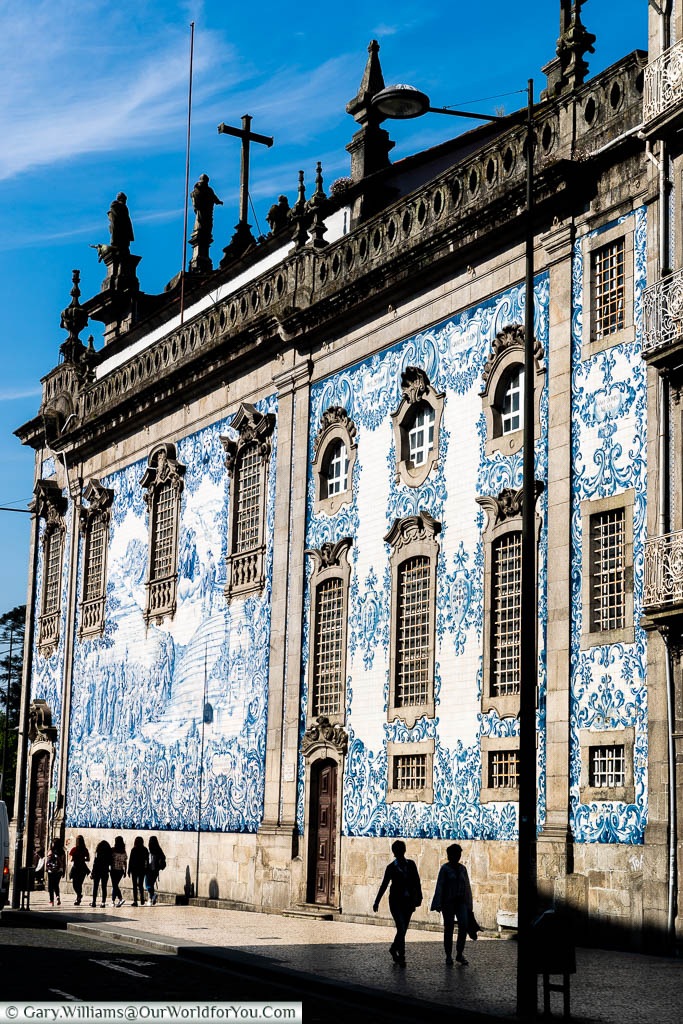
Dotted all around Porto are stunning pieces of architecture from striking Sé do Porto, the 18th-century Romanesque Cathedral, sitting high above the city. To the elegant Art Nouveau cafés and the azulejo tiled São Bento train station, depicting Portugal’s historical past.
Ahh, yes, then there are the Heritage Trams weaving their way through Porto's narrow streets and lanes. Jump on route 22 to take in Porto’s famous sites.
Where to stay in Porto
Local information
If you've yet to visit the charming and colourful city of Porto, then you're in for a treat.
I found this DK Top 10 Pocket Travel Guide invaluable.
They're extremely informative, easy to follow, and the pictures and maps tempt you to discover more.
Now heading to Tavira in southern Portugal, to the far-eastern shores of the Algarve.
Tavira is a charming, welcoming town with whitewashed dwellings lining the ancient streets, giving that lovely Moorish influence throughout.
Straddling the River Gilão is a 17th-century seven arched bridge believed to be of Roman origin. Looking back across the bridge, you get a lovely view over Tavira. However, to see Tavira from high up above its colourful rooftops with birds soaring past your eyeline, you must head to Tavira Castle.
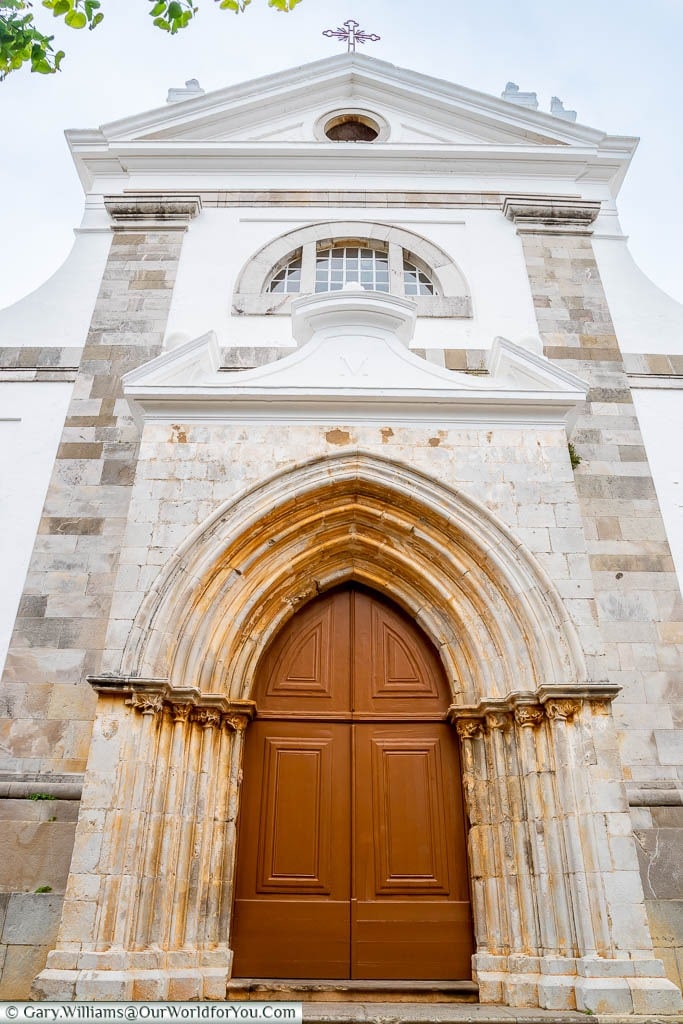
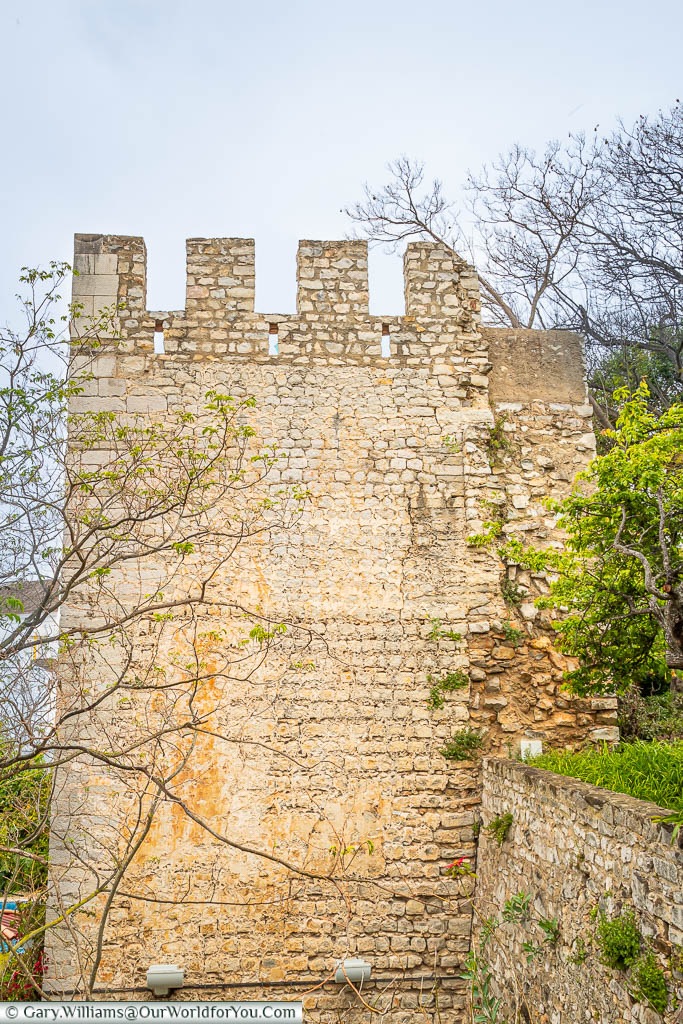
Remains of the medieval castle and its ramparts can still be appreciated, with a pleasant, shady tree garden planted within its historic walls. Tavira Castle was partially destroyed during the colossal Lisbon earthquake in 1755, which devasted Lisbon and many towns in-between.
It is a delightful experience strolling around Tavira and its many praças and tempting restaurants serving delicious fresh fish and seafood. Although, if it’s churches you enjoy visiting, then Tavira is for you, as it has an incredible 37 chapels and churches for you to discover.
Where to stay in Tavira
More Info
Tomar is located in the heart of central Portugal, and for us, it was a delightful find. It’s a lovely size city to stroll around, overflowing with history and plenty of restaurants to savour. Actually, there not too many tourists.
Doubtless, the primary reason visitors head to Tomar is to see the magnificent Knights Templar Church and its incredible labyrinth of cloisters. The ancient chapel is situated in the Templar Castle, which sits high on a hill overlooking Tomar city.
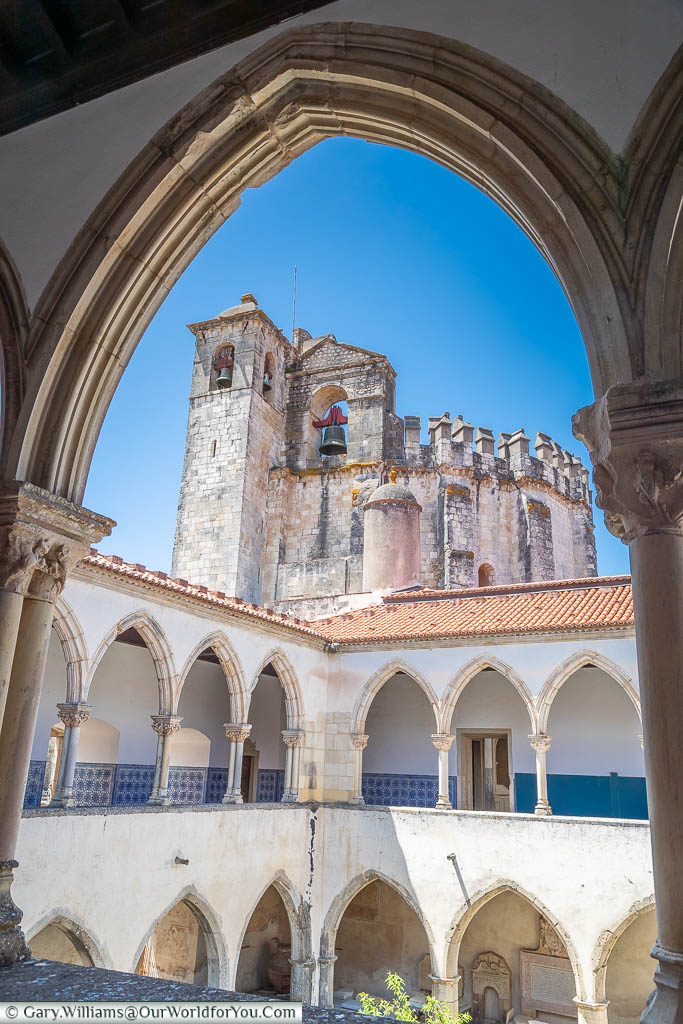
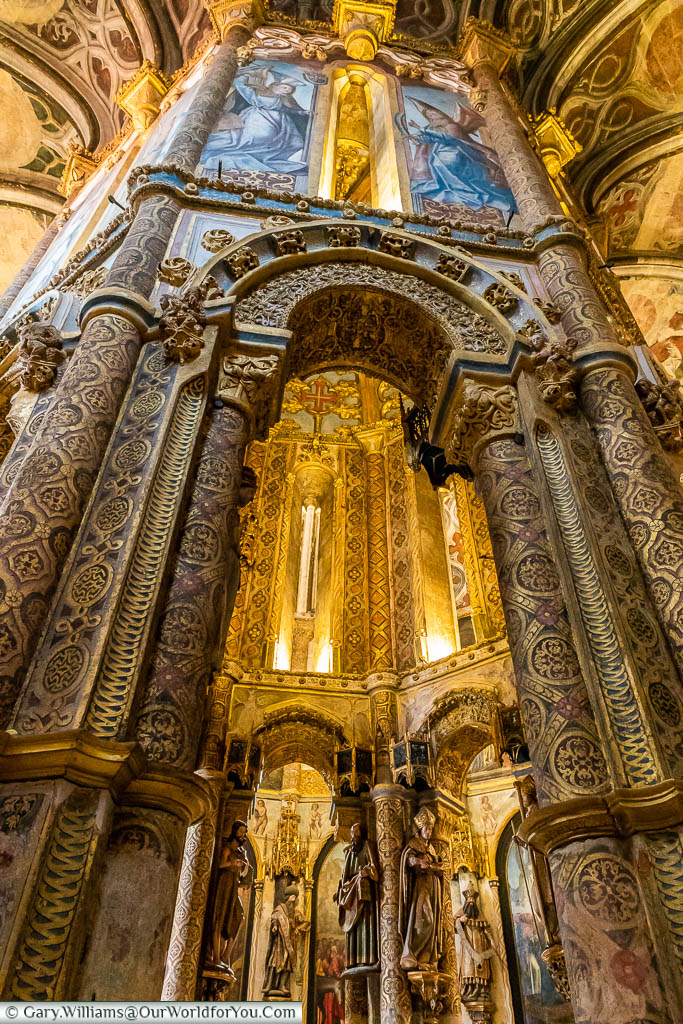
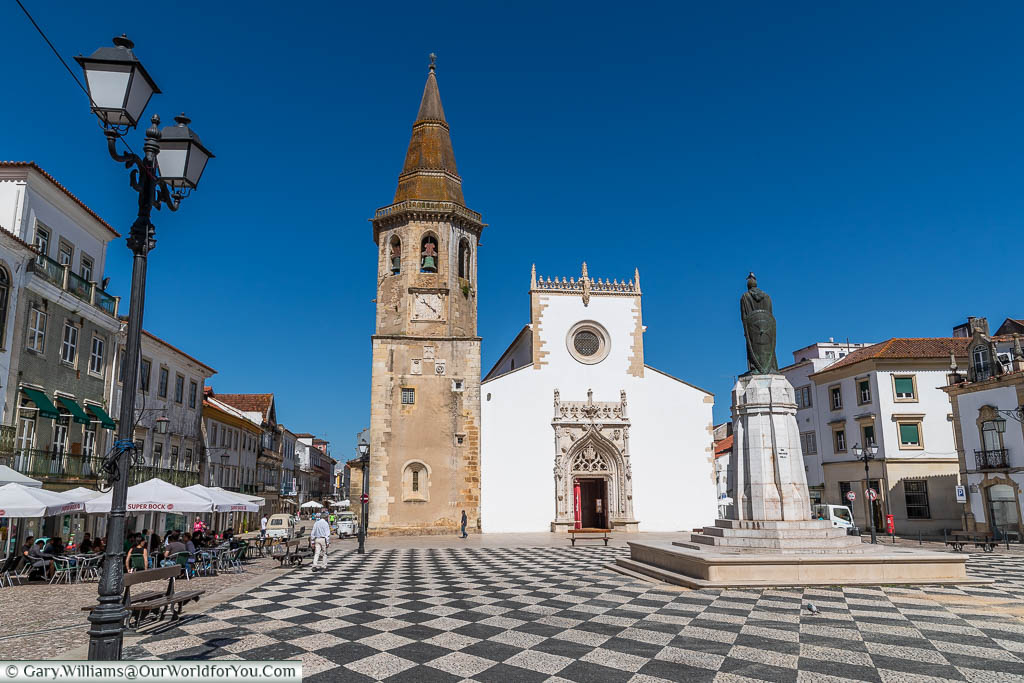
Where to stay in Tomar
Local information
Discover more
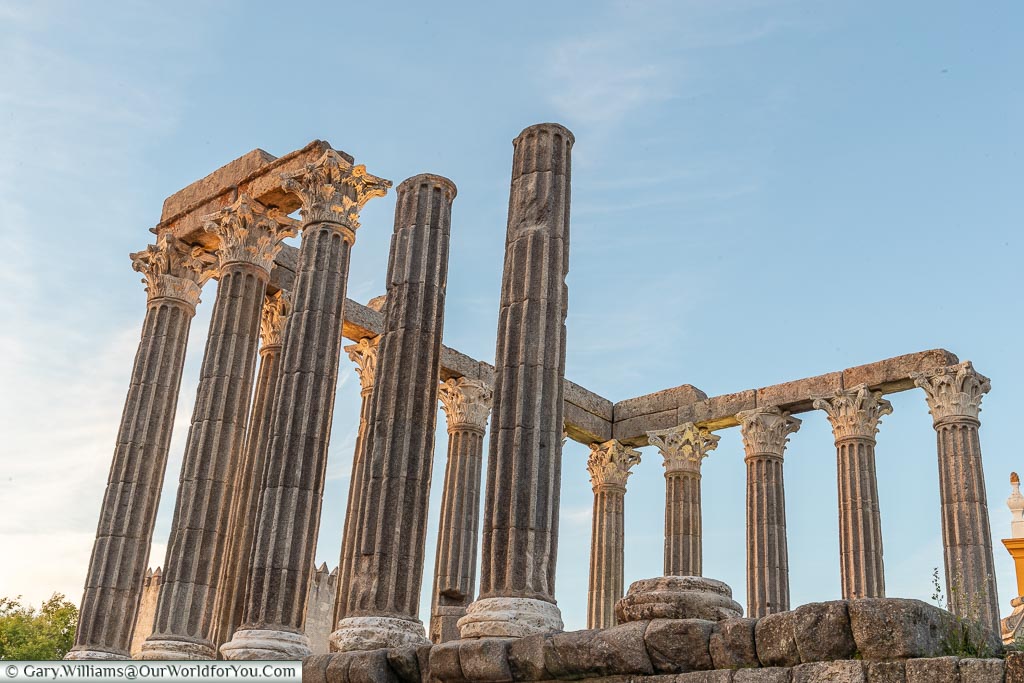
9 UNESCO Sites to visit in Portugal
While the captivating palaces of Sintra are accessible from Lisbon and can be enjoyed as a day trip, why not stay overnight and experience the quieter side of Sintra
The main decisions when visiting Sintra are which enchanting palaces and gardens you want to head to first, bearing in mind you may not discover them all in a short stay.
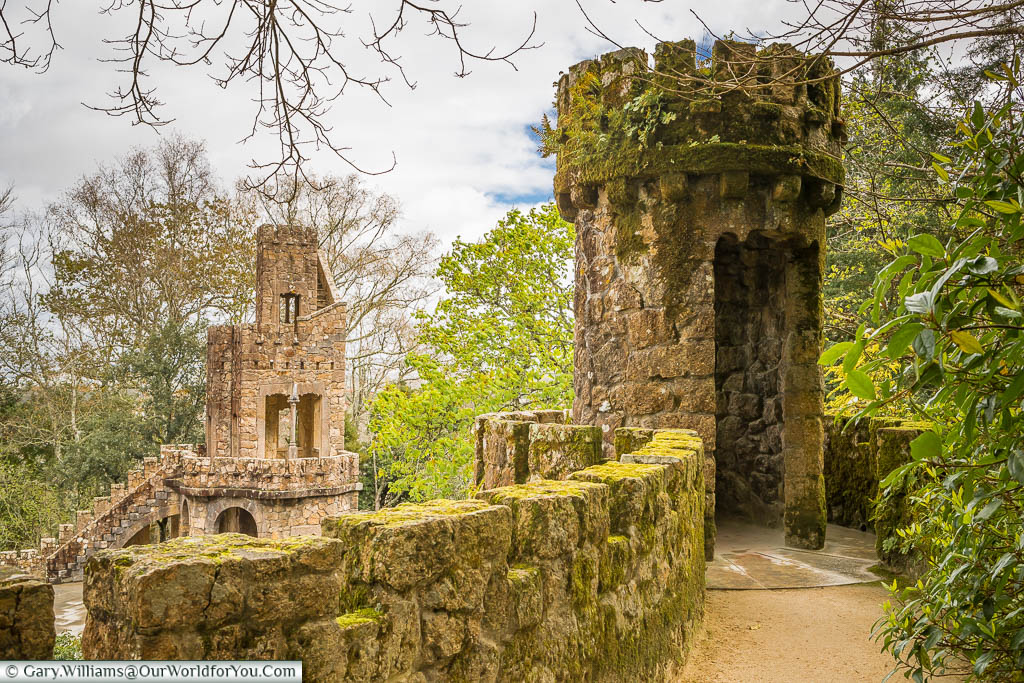
Whichever you chose, I’m sure they will be delightful. Our plan was to visit Quinta da Regaleira, Palácio Nacional da Pena, Castelo dos Mouros . Unfortunately, we ran out of time to explore Castelo dos Mouros.
Nevertheless, Quinta da Regaleira and Palácio Nacional da Pena were magnificent, and I’m pleased that we enjoyed them both to the full. My favourite was Quinta da Regaleira, with its mysterious Initiatic Wells, caves, grottos, waterfalls and underground walkways. You felt like you were a child and on an adventure in a magical secret garden.
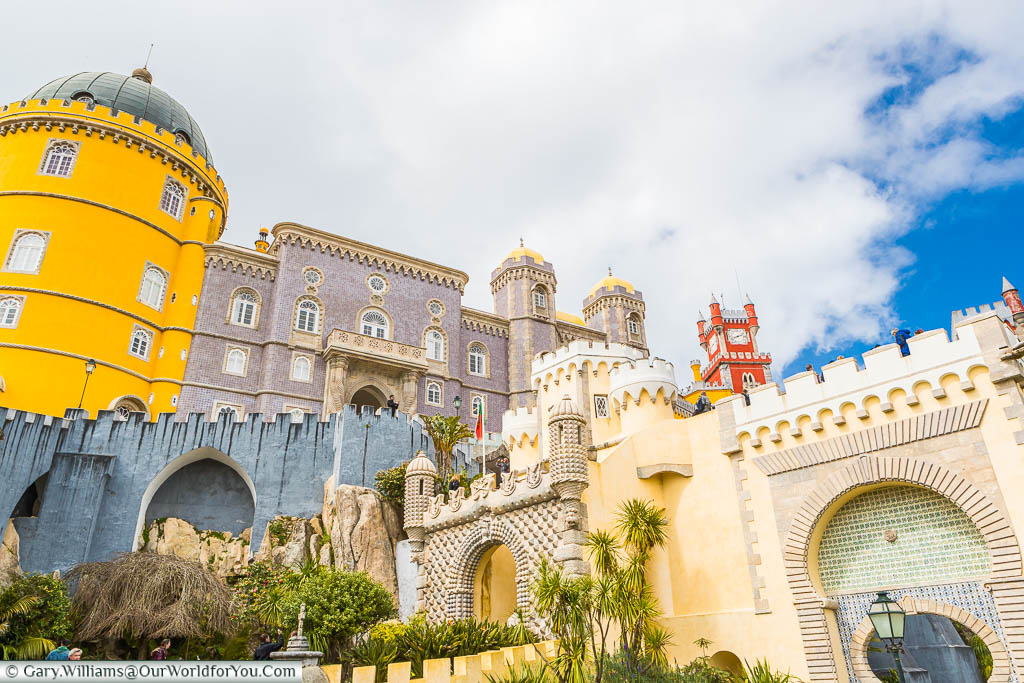
At Pena Palace, allow time to stroll through the Garden of Camelias, down to the Valley of the Lakes and take a peek at the colourful duck house.
It isn’t surprising that the cultural landscape of Sintra is inscribed onto the UNESCO World Heritage Site.
A day trip from Lisbon
Where to stay in Sintra
Local information
Our Tip
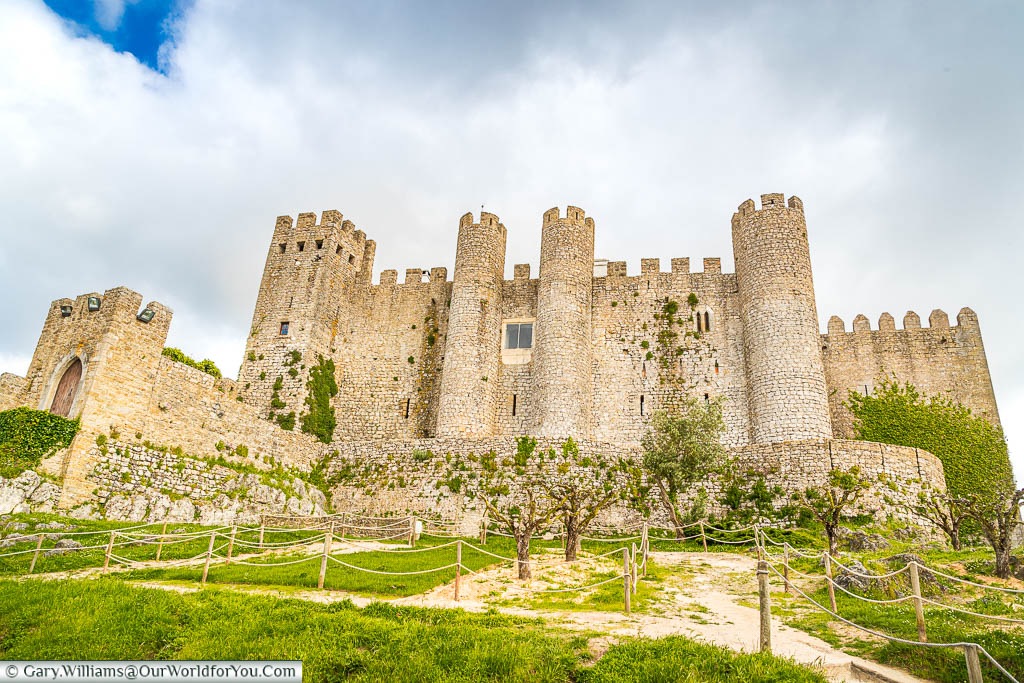
Óbidos’s ancient history dates back centuries, even prior to the Roman’s arrival. Evidence of Roman ruins can still be found around the base of the medieval towers of Óbidos Castle. Not only are you able to visit the well-preserved castle, but you can also even stay overnight if you wish.
At the opposite end of Óbidos through the city gate, adorned with Azulejo, is a 16th -century aqueduct. This aqueduct was built around 1570 at the orders of the Queen of Portugal (Queen Catherine). It’s believed to be the last fully intact aqueduct in Portugal.
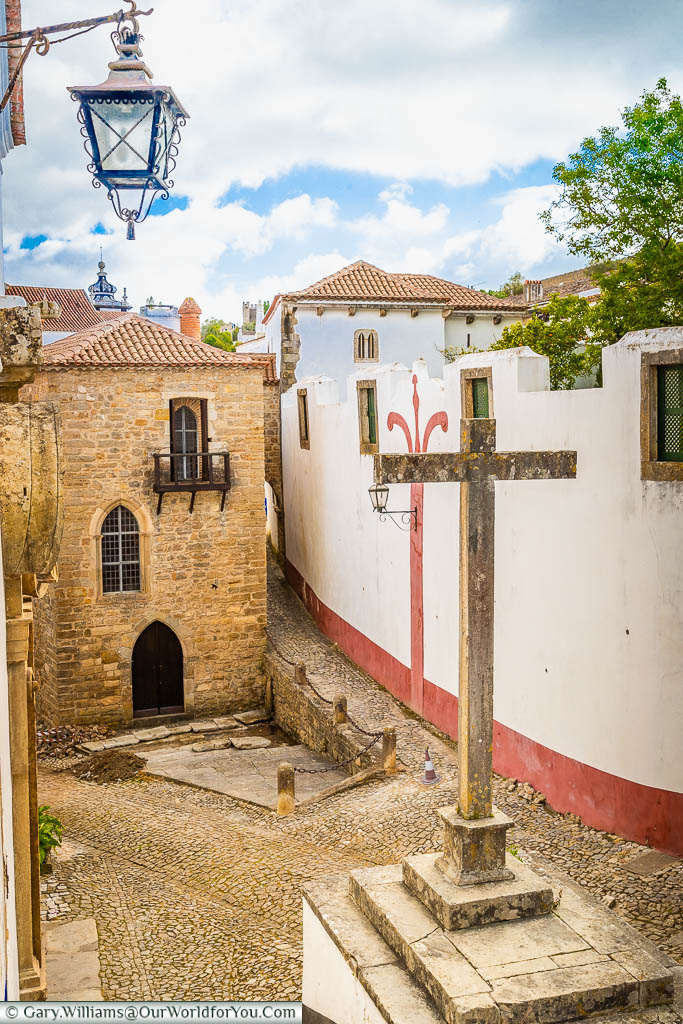
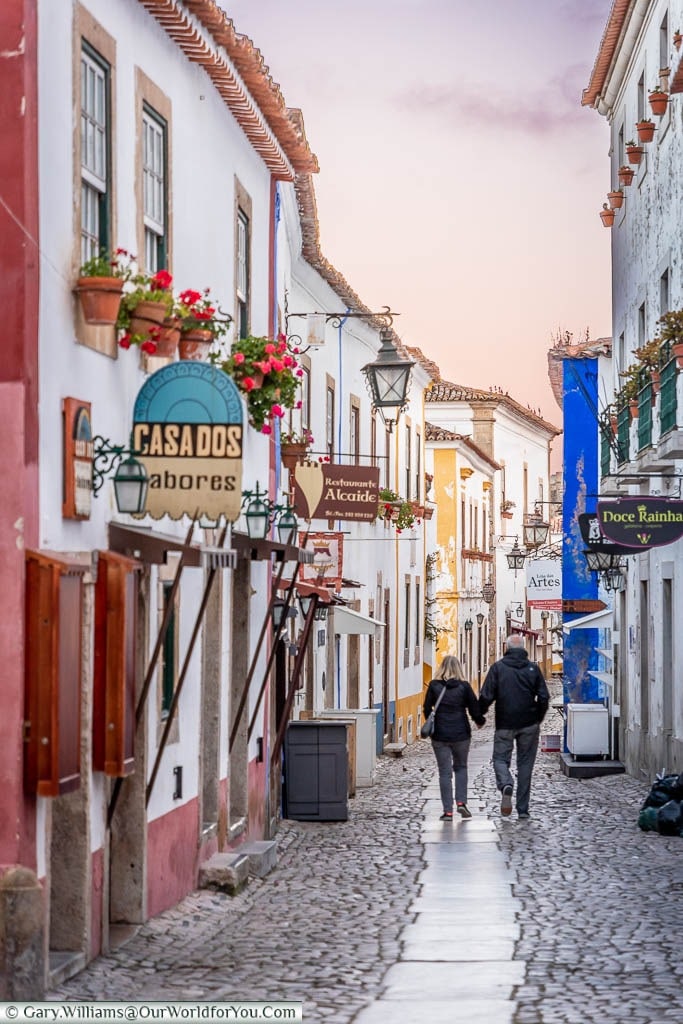
The colourful medieval street of Rua Direita snakes its way through the town amongst little boutiques, ice cream parlours and intriguing stores. Strolling a couple of lanes back and the quiet alleyways offer tiny, picturesque courtyards and some of the smallest chapels you’ll ever visit.
I would urge you to stay overnight as the evening draws on, the visitors disappear, and you’ll have Óbidos to yourselves.
Where to stay in Óbidos
Local information
Our recent new found love is Portugal, it is such a beautiful country. While planning our trip, I used the DK Eyewitness books. I find them extremely informative, easy to follow and the pictures and maps tempt you into discovering more.
We used a previous version of this book to plan our north to south Portuguese road trip, now you can grab the revised copy.
Ponte de Lima is located in the northwest of Portugal and is named after the Roman Bridge that spans the River Lima banks.
The bridge is an integral part of Ponte de Lima it’s where visitors and locals alike often flock to. Ponte de Lima formed part of the main Roman Road from Braga, northwest to Santiago de Compostela; it would later become part of the Portuguese Way.
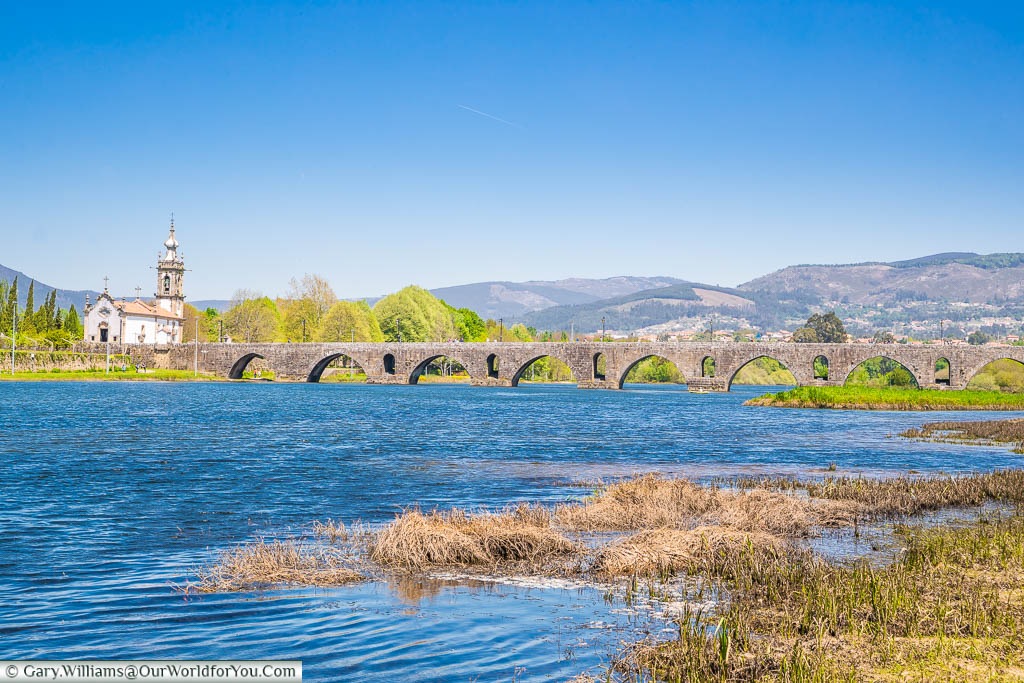
Ponte de Lima is an incredibly ancient town and is one of the oldest settlements in Portugal. It was given its first charter in 1125 by the mother of the first King of Portugal.
Located in Portugal's lush farming region, there are beautiful sculptures and bronzes dotted throughout Ponte de Lima depicting farmworkers and their trade.
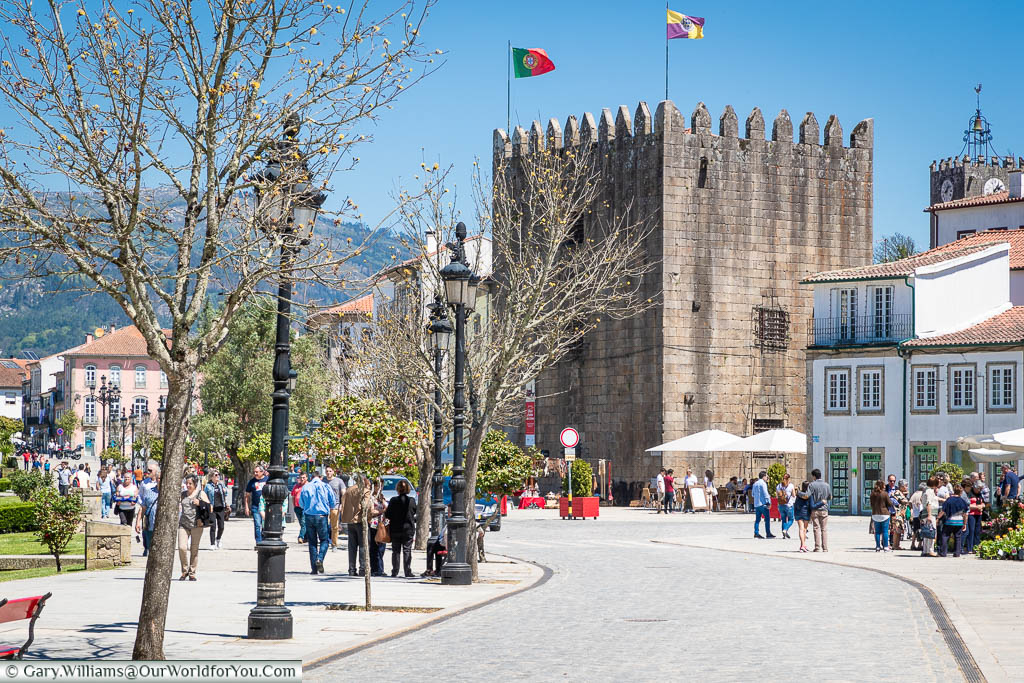
As you stroll further back amongst the narrow streets of Ponte de Lima, the charming town, its attractive architecture, and well-maintained gardens reveal their selves even more.
Ponte de Lima is situated in the Minho Provence of Portugal, which can only mean one thing, it’s the land of Vinho Verde. The light “green wine” with a summer vibe and a pleasant light effervescence.
Where to stay in Ponte de Lima
Local information
* This post may contain links to affiliated sites where we earn a small commission at no additional charge to you.

